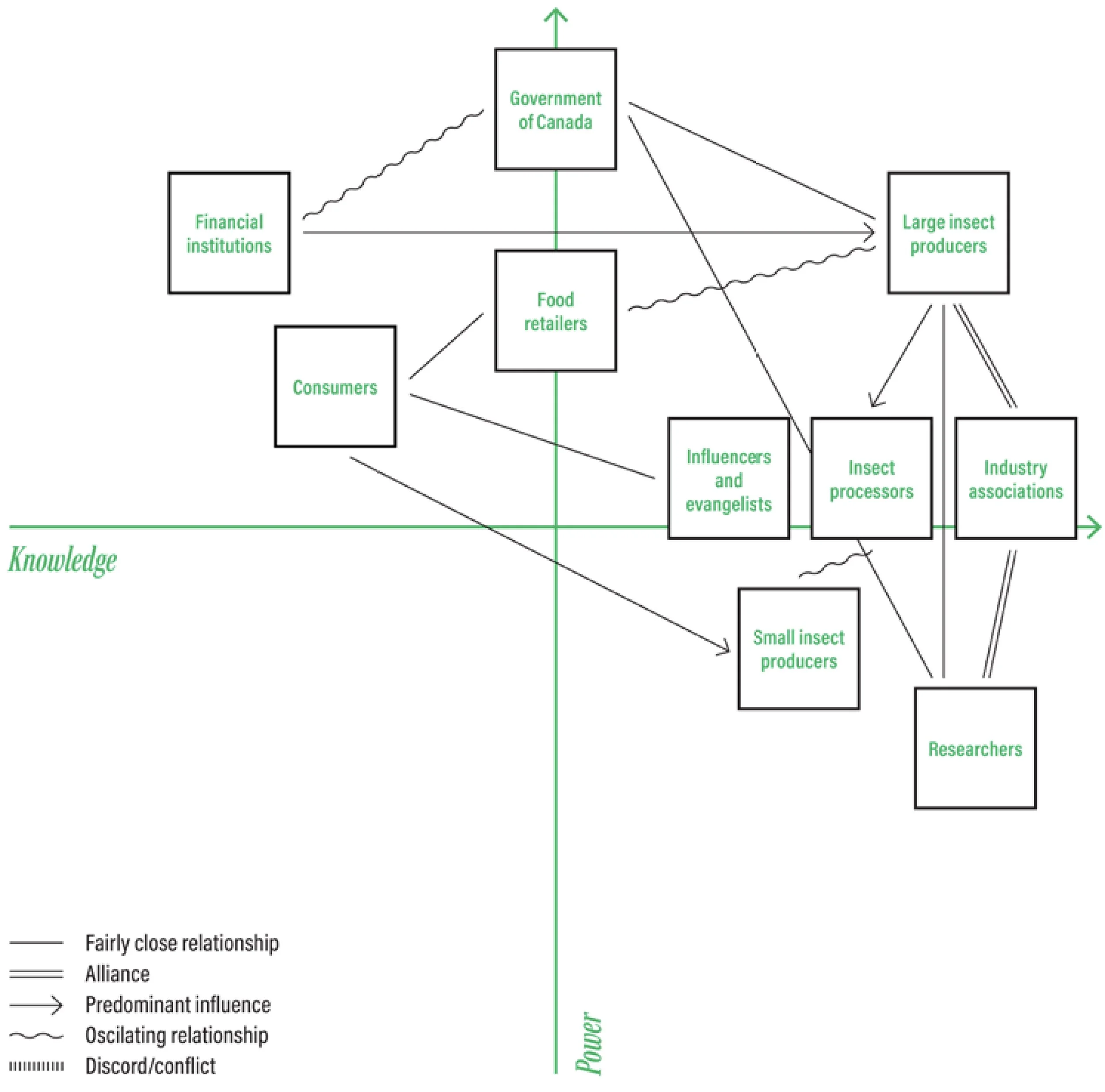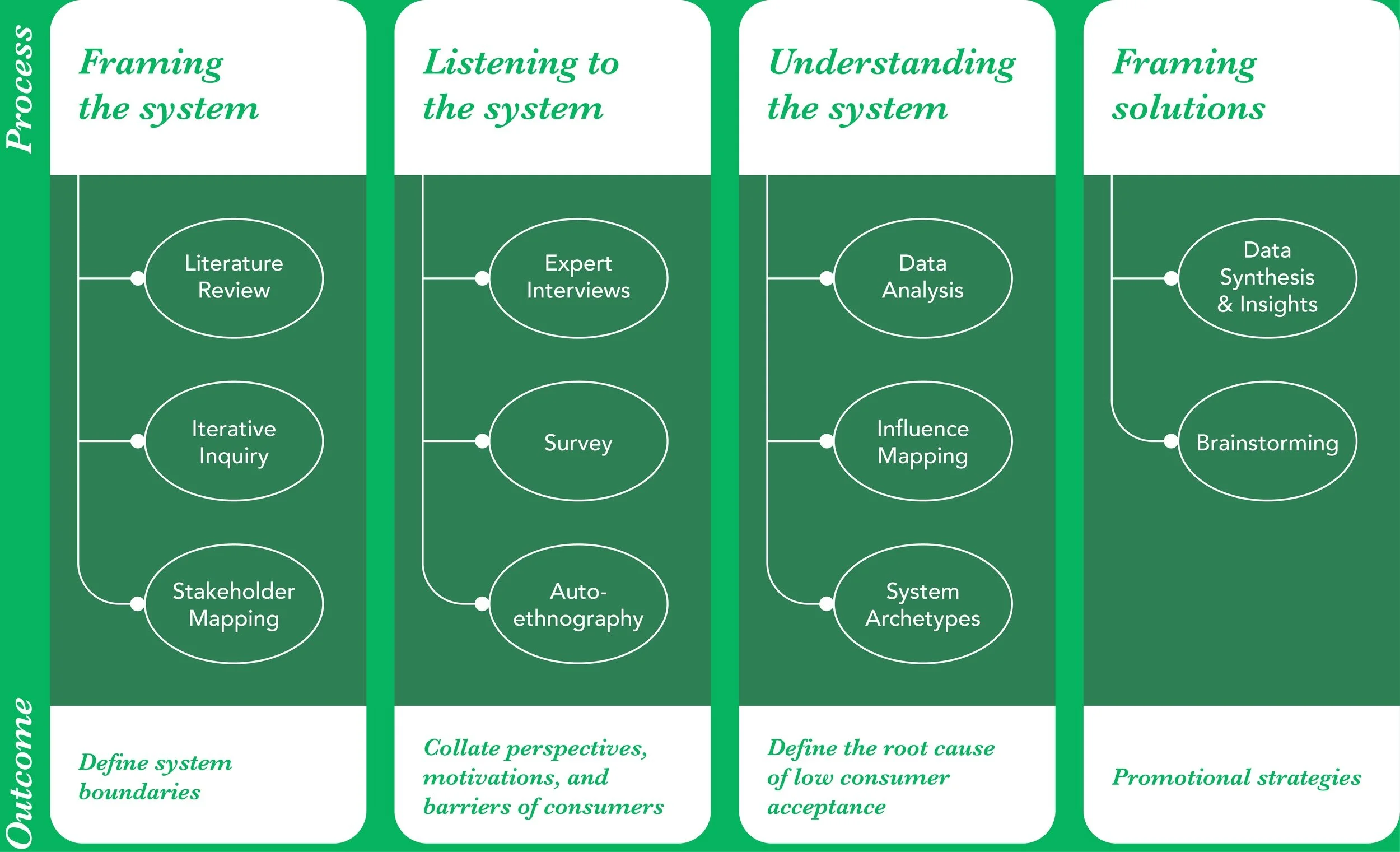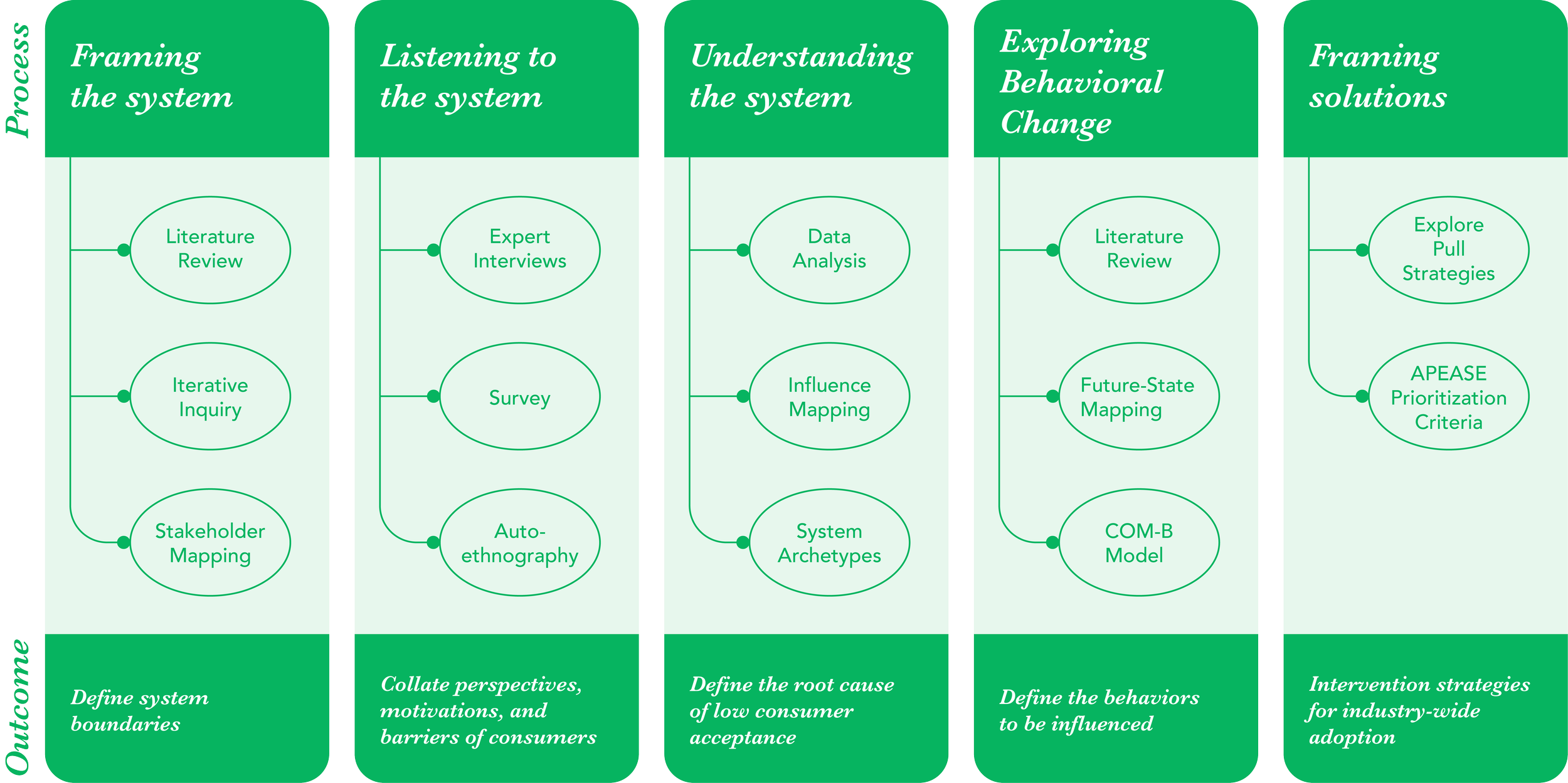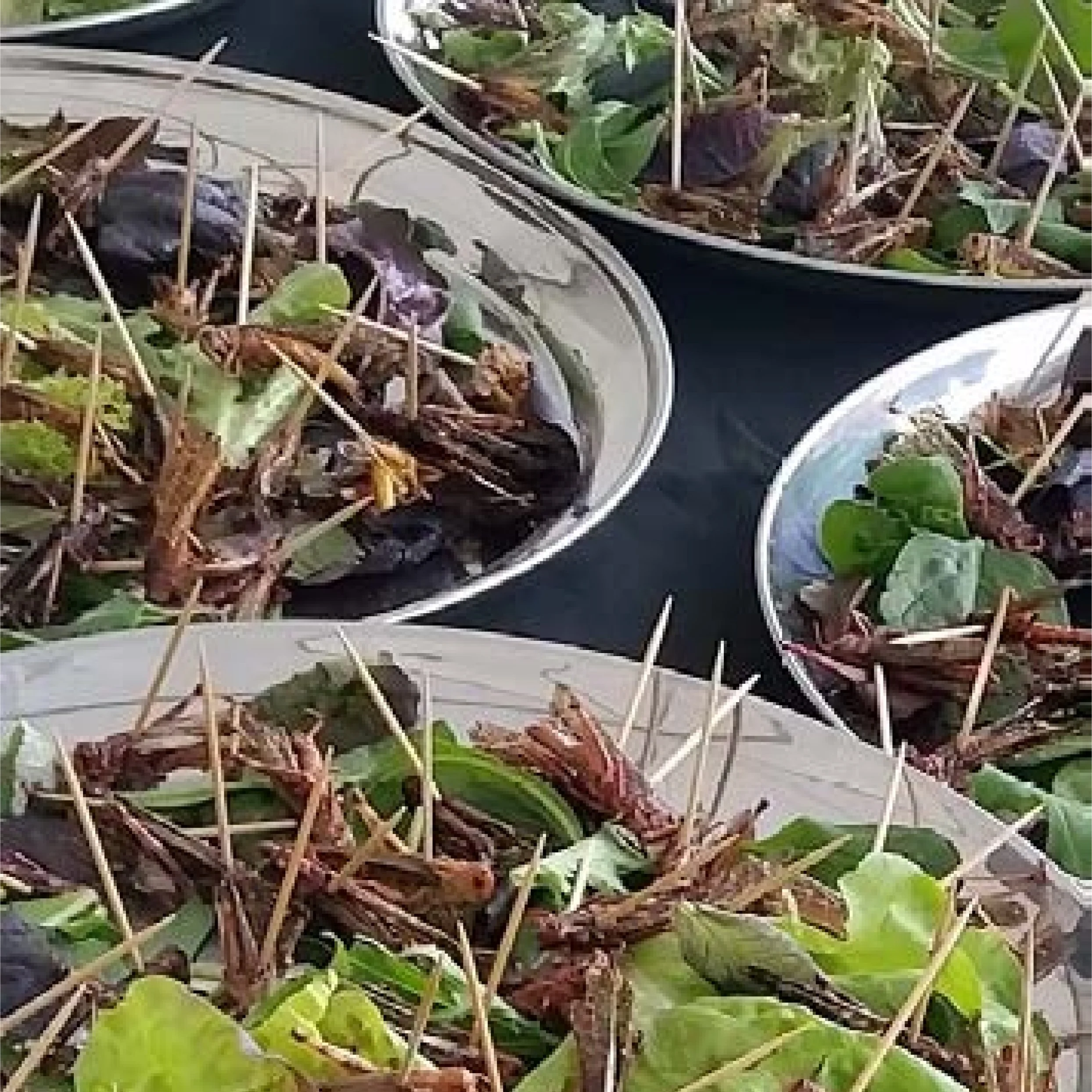What’s the big ick?
Examining how behavioural change can shift perceptions about eating insects
Problem
Slow growth and acceptance of the edible insect industry in Canada and disconnects between global potential and local market response.
Timeline
12-months (June 2022 – May 2023)
Team
Indranil Udupi
Matthew Jacula
Helen Kerr (Advisor)

Humans & Insects - a conflicted relationship
The world population is projected to reach nearly 10 billion by 2050 and the increasing demand for food will put immense pressure on agricultural systems and natural resources. There is an impending need to expand our palates and improve both human nutrition and the environment through the diversification of food choices. Insects have served as a crucial food source for nearly all human societies, and this tradition continues in the majority of non-Western cultures today. Even today, over 2 billion people consume edible insects (there are 2000 species) in various forms.
However, insects are often associated with negative connotations like filth, danger, pest-like, especially in Western cultures owing to several psychological and sociocultural factors. As such, this project is an exploration of how to reshape norms and foster a resilient food future for Canadians.
So what? - the problem
In 2013, UN released a pivotal report highlighting the immense potential of insects as a food source. Since then, globally speaking, the edible insects industry has made significant strides (Quebec included!). Even though Canada is home to the world’s largest cricket production factory (link Aspire farms website), we’re non seeing enough traction in the local Canadian markets. In addition, the lack of substantial Canadian consumer research emphasizes the need for data to understand the market dynamics and consumer preferences to potentially drive greater adoption of edible insects in diets. This analysis led to our research question:

“How might we promote the acceptance of insects as a protein source to a wider audience in the Canadian market?”
Research Process
Planning the research was critical to the success of the project especially when exploring an ambiguous problem space. It was integral to have a clear vision of the intended outcomes from each stage of the process - critical in a long-term project. We used a systems-thinking approach towards the planning and execution of the research.
An AHA Moment!
We uncovered a key insight during the ‘Understanding the System’ phase. Our survey analysis revealed that Canadians acknowledged the value of insects as a supplementary protein source EXCEPT they didn’t want to be the ones consuming it. This contradiction revealed that it wasn't enough to promote the benefits of edible insects; we had to shift behaviours from acknowledgment to adoption.
We took inspiration from the behavioural change techniques used by the UK government and the UN's initiatives in Africa. We selected the COM-B (link to resource) behavioural change framework to analyze current behaviours and design intervention strategies to transform consumer behaviour.
Redefining Research:
Following this insight, we revised our research question ->
This also meant redefining the research process to incorporate an exploration of behavioural change through literature reviews and future-state mapping, laying the groundwork for using the COM-B model. We unpacked the components of behaviour change by analyzing current capabilities, opportunities, and motivations of Canadian consumer behaviour.
“How might we promote the acceptance of insects as a supplementary protein source and encourage more sustainable food behaviours?”

Solution - Pull strategies for Behavioural Change
We initially envisioned the solution/s to be useful for brands or organizations selling insect protein but the revised solution framing went further. It aimed to nudge behaviours of consumers through pull strategies that could be implemented by a wider range of stakeholders including the Govt of Canada, industry networks, suppliers, researchers, and education boards.
These pull strategies aim to naturally align Canadians' intrinsic values like sustainable and healthy living to the consumption of insects. The strategies were evaluated using the APEASE (external link) criteria, ensuring our solutions were not only effective but also equitable, practical, and resonated with consumer needs and motivations.
Some key strategies:
Media Shaping Behaviour
Rebranding Insects
Targeted education

Potential Impact
These behavioural change strategies will take the shape of policy recommendations and shape the direction of the edible insect industry, making consumption a regular, normalized part of Canadian diets.
Sustainability: By promoting insects as a protein source, Canada will significantly reduce its carbon footprint
Health Benefits: Insects are protein-rich and can enhance the nutritional quality of the Canadian diet
Education: lead to early exposure and positive attitudes towards insect consumption, ensuring a sustainable shift in dietary habits.
Support Local Production: reduce reliance on imported protein sources and promote local businesses
Economic Diversification: Insect farming and processing will create new jobs and economic opportunities
Outcomes - far reaching:
Broadened Strategy: We transitioned from a narrow focus on brands to a comprehensive strategy influencing consumer behaviour with pull strategies.
Positive Behavioural Change: The pull strategies will create demand to nudge consumer behaviours in a meaningful ways.
Unified Behavioural Shift: A united approach across various sectors to not only market edible insects but also to support a shift towards sustainable and healthier dietary choices among consumers.
Learnings:
The importance of planning and having a clear vision for each research phase. A pivotal lesson was observation, which revealed the insight that became the centre of our findings. We learnt the importance of adaptability and iteration; staying open to new discoveries and willing to adjust the approach was fundamental to the project's success.



